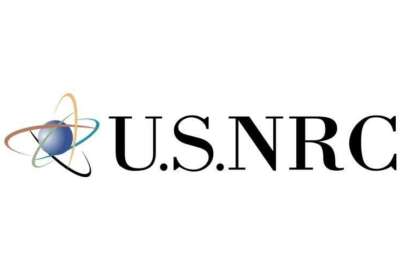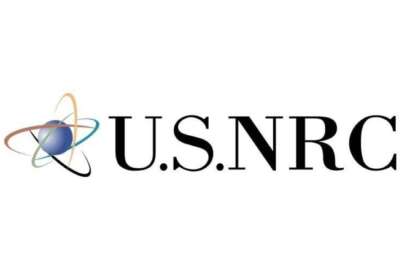NRC seeking to ‘build the bench’ with stronger HR skills
On top of trying to recruit and retain HR staffing specialists, NRC also focuses on developing skills for long-term workforce planning.
Many human capital leaders face intersecting challenges — reaching out to recruit new employees and offering ways to retain current staff, while also trying to develop long-term workforce skills to best meet an agency’s needs.
But for the Nuclear Regulatory Commission, before any of that can happen, there has to be a focus on the human resources staff who work in tandem with the rest of the agency’s operations, said Eric Dilworth, NRC’s acting chief human capital officer.
On top of trying to recruit and retain HR staffing specialists who process hiring actions in the agency’s human capital office, NRC also focuses on developing skills for long-term workforce planning, Dilworth said.
“We have a wide gamut of HR skills needed in our organization, from HR analysts, [to] our training experts, our policy people, labor and union negotiations,” Dilworth said in an interview. “We target all of those depending on the need. And we have a need in a lot of those areas.”
The monumental challenge of human capital management isn’t unique to NRC. The Office of Personnel Management has also said HR remains a governmentwide skills gap, meaning that many agencies either don’t have the right HR skills on staff, or don’t have enough HR employees on board in the first place.
Dilworth said the HR field is highly competitive, especially in the national capital region. But NRC’s recruitment and retention strategies also vary depending on the geographic location.
“Some locations have great relationships with local colleges in the community. We do a lot of outreach at those universities,” Dilworth said. “Also, we look in, of course, the private sector, for people with nuclear backgrounds or engineering backgrounds, whatever it may be that we need for our positions.”
For NRC, one area of possible expansion is looking at bringing in more HR trainees, aiming to fill roles ahead of facing the reality of more seasoned, experienced agency employees eventually heading into retirement.
“We’re starting to look at our own career field for human resources, building that bench,” Dilworth said. “That’s something we haven’t done a lot of in this office, but that’s something we’re looking at moving to.”
Balancing retention goals with skills needs
To try to encourage employees to stay for a longer time with the agency, NRC offers a rotational program and other training opportunities for current employees. And to figure out what opportunities to provide, NRC surveys staff members twice a year to gauge what types of training agency employees are looking for.
For Dilworth, employees’ desires also have to be balanced with training for the skills the agency needs on staff.
“We ensure that people are getting the training, so that they’re qualified to do their job, but also use the career development opportunities and training that folks are looking for,” he said.
Currently, one area of training that NRC is particularly targeting is leadership development for agency employees.
“That gives those folks who do want to move into the leadership realm the right skills to do that,” Dilworth said. “It’s outreach, it’s taking care of our current employees and ensuring we’re getting the right skills to meet the mission.”
On top of training, rotational opportunities can be beneficial as well. They’re a way to offer development options for employees, while at the same time building necessary skills for an agency. Plenty of agencies have used rotational opportunities for just that reason.
Usually, during these rotations, employees will apply for and work at a different agency for between six months and one year before returning to their home agency. In many cases, agencies are looking at ways to expand rotations specifically for enhancing federal employees’ skills in cybersecurity.
To measure how training and development opportunities affect workforce retention, Dilworth said NRC’s human capital office begins by looking at results of the Federal Employee Viewpoint Survey (FEVS) — but it doesn’t end there. The agency has also created a “culture team,” which aims to gather more frequent employee feedback. Engagement, communication and workload management are key areas that Dilworth is currently targeting for improvements.
“You do start with FEVS, but then [you] have this interaction with the workforce to understand challenges and barriers to job satisfaction, or other issues that they could be dealing with,” Dilworth said. “People remain at an agency or an organization because they enjoy the work, first of all, but then … [having] a culture that makes people say they feel valued, and feel like their work is valued.”
How NRC views front-end recruitment
But to ensure strong agency retention, there’s also the challenge of hiring the right people on the front end. To some extent, NRC focuses on a combination of early-career recruitment, alongside targeting specific skillsets that the agency needs.
NRC has its own paid apprenticeship program, called the Nuclear Regulator Apprenticeship Network (NRAN), which brings in about 25 entry-level engineers and scientists per year. NRAN’s end goal is to train a cohort of employees in skills the agency is in need of, then develop those skills through trainings over the course of 18 months, or up to two years.
“After two years, they have gained a lot of experience and then they’re placed in a permanent position throughout the agency — it could be at headquarters, or it could be at one of the one of the four regions,” Dilworth said.
That apprenticeship program also dovetails with another early-career recruitment effort: NRC’s summer internship program. The internship opportunities focus not only on helping early-career talent develop skills, but also to ideally convert interns into full-time employees at their end of their stints.
“One of the things we’re looking at [is] where we can do year-round recruitment, so that we’re ready to get those students that are graduating in May, and then also students graduating in December,” Dilworth said. “We’re working [on] putting that program together that would foster that link to those students.”
Copyright © 2025 Federal News Network. All rights reserved. This website is not intended for users located within the European Economic Area.
Drew Friedman is a workforce, pay and benefits reporter for Federal News Network.
Follow @dfriedmanWFED






